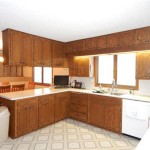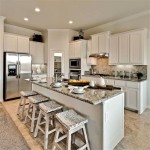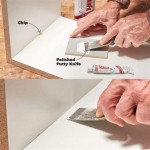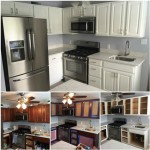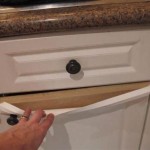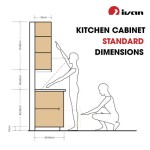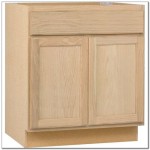Can You Mix Cabinet Colors? A Comprehensive Guide to Kitchen Design
The question of whether one can mix cabinet colors in a kitchen renovation or new build is a popular and pertinent one. The short answer is unequivocally yes. However, the success of mixed cabinet color schemes hinges on strategic planning, an understanding of design principles, and careful execution. This article provides a comprehensive overview of mixing cabinet colors, exploring the considerations, planning process, and best practices for achieving a visually appealing and functional kitchen.
Mixing cabinet colors has evolved from a niche trend to a mainstream design choice, offering homeowners the opportunity to personalize their kitchens and create a unique statement. No longer confined to the uniformity of a single color palette, kitchens can now benefit from the depth, dimension, and visual interest that mixed cabinetry provides. The practice allows for highlighting specific areas, defining zones, and incorporating various design aesthetics, resulting in a more dynamic and engaging space.
Before diving into color selection and design layouts, it is crucial to understand the fundamental principles that govern a well-executed mixed cabinet color scheme. These principles involve considerations related to balance, contrast, harmony, and functionality, all of which contribute to the overall success of the design.
Key Considerations Before Mixing Cabinet Colors
Several factors must be taken into account before embarking on a mixed cabinet color project. These considerations ensure that the resulting design is not only visually appealing but also functional and cohesive with the overall aesthetic of the home.
Kitchen Size and Layout: The size and layout of the kitchen significantly influence the effectiveness of mixed cabinet colors. In smaller kitchens, using two contrasting colors may overwhelm the space, making it appear even smaller. In such cases, opting for variations of the same color family or using a lighter accent color can create a more open and airy feel. Conversely, larger kitchens offer more flexibility, allowing for bolder color combinations and the strategic use of darker hues.
The layout of the kitchen, including the placement of appliances, islands, and countertops, also plays a crucial role. The color scheme should complement the kitchen's architecture and highlight its best features while minimizing any design flaws. For instance, a poorly lit corner can be brightened by using lighter-colored cabinets in that area.
Existing Décor and Style: The new color scheme should integrate seamlessly with the existing décor and style of the home. Consider the color of the walls, flooring, countertops, and appliances. A harmonious color palette that complements these elements will create a cohesive and unified look. For example, if the home features a modern aesthetic with clean lines and minimalist furniture, a mixed cabinet color scheme with neutral tones and subtle accents may be more appropriate than a bold and vibrant combination.
Furthermore, the overall style of the kitchen, whether traditional, contemporary, farmhouse, or eclectic, should inform the color choices. Traditional kitchens may benefit from classic color combinations such as white and wood tones, while contemporary kitchens can explore bolder and more unconventional pairings.
Desired Mood and Ambiance: The color scheme should reflect the desired mood and ambiance of the kitchen. Colors have a significant impact on emotions and can influence the overall feeling of the space. Lighter colors, such as white, cream, and light gray, tend to create a bright, airy, and calming atmosphere. Darker colors, such as navy blue, charcoal gray, and deep green, can evoke a sense of sophistication, elegance, and warmth.
Consider how the kitchen will be used and the type of atmosphere you want to create. For example, a kitchen designed for entertaining may benefit from a more lively and vibrant color scheme, while a kitchen intended for quiet family meals may be better suited to a more subdued and relaxing palette.
Planning Your Mixed Cabinet Color Scheme
Once the key considerations have been addressed, the next step involves planning the specific details of the mixed cabinet color scheme. This includes selecting the colors, determining their placement, and coordinating the hardware and accessories.
Color Selection: Choosing the right colors is paramount to the success of the design. Consider the different color families and their associated undertones. Neutral colors, such as white, gray, and beige, provide a versatile backdrop that can be paired with a wide range of other hues. Warm colors, such as red, orange, and yellow, can add energy and vibrancy to the space. Cool colors, such as blue, green, and purple, can create a calming and relaxing atmosphere.
Consider using a color wheel to explore different color combinations and understand the relationships between different hues. Complementary colors, which are located opposite each other on the color wheel, create a high-contrast look. Analogous colors, which are located next to each other on the color wheel, create a more harmonious and subtle effect.
Furthermore, consider the intensity and saturation of the colors. A bright, saturated color will have a more pronounced impact than a muted, desaturated color. It can be helpful to obtain paint samples or swatches and test them in the kitchen to see how they look under different lighting conditions.
Color Placement: The placement of the different colors is just as important as the color selection itself. Consider the different areas of the kitchen and how the colors will be distributed. A common approach is to use a darker color for the lower cabinets and a lighter color for the upper cabinets. This creates a sense of grounding and visual balance.
Another popular option is to use a contrasting color for the kitchen island. This can help to define the island as a focal point and add visual interest to the space. Alternatively, one can choose to have a single section of cabinetry in a different color, creating a statement wall or highlighting a specific feature.
Hardware and Accessories: The hardware and accessories, such as cabinet pulls, knobs, faucets, and lighting fixtures, should complement the mixed cabinet color scheme. Choose hardware that coordinates with the colors of the cabinets and enhances the overall style of the kitchen. For example, brushed nickel or stainless steel hardware can complement cool-toned cabinets, while brass or bronze hardware can complement warm-toned cabinets.
Pay attention to the details. The style of the hardware should align with the overall design aesthetic of the kitchen. Clean, minimalist hardware is suitable for contemporary kitchens, while ornate, decorative hardware is better suited for traditional kitchens.
Best Practices for Successfully Mixing Cabinet Colors
To ensure a successful outcome, it is essential to adhere to certain best practices when mixing cabinet colors. These guidelines provide a framework for achieving a cohesive and visually appealing design.
Maintain a Balance: Balance is crucial in any design, but it is especially important when mixing cabinet colors. Strive for a balanced distribution of colors throughout the kitchen. Avoid concentrating one color in a single area, as this can create a sense of imbalance.
Consider the visual weight of the colors. Darker colors tend to appear heavier than lighter colors, so use them strategically to anchor the design and create a sense of stability. Lighter colors can be used to open up the space and create a sense of airiness.
Use a Consistent Theme: While mixing cabinet colors allows for creativity and personalization, it is important to maintain a consistent theme throughout the kitchen. Avoid using too many different colors or styles, as this can create a chaotic and disjointed look.
Choose a cohesive color palette that reflects the desired style and ambiance of the kitchen. Consider using a dominant color and one or two accent colors that complement it. Maintain consistency in the hardware, accessories, and other design elements to create a unified and harmonious look.
Test Before Committing: Before making a final decision, it is highly recommended to test the color combinations in the kitchen. Obtain paint samples or swatches and apply them to a small area of the cabinets. Observe how the colors look under different lighting conditions and at different times of the day.
Consider creating a digital rendering or mockup of the kitchen to visualize the mixed cabinet color scheme. This can help to identify any potential issues and make adjustments before committing to the final design. It's beneficial to live with the paint samples for a few days to be certain about the selections.
In conclusion, mixing cabinet colors can be a powerful tool for transforming kitchens into personalized and visually appealing spaces. By carefully considering the size and layout of the kitchen, the existing décor, the desired mood, and adhering to best practices, homeowners can achieve a stunning and functional design that reflects their unique style and preferences.

Mixing Kitchen Cabinet Colors A Blissful Nest

Kitchen Confidential 7 Ways To Mix And Match Cabinet Colors

Mix Match Cabinets A How To Guide The Cabinet Doctors

Mixing Cabinet Colors In The Kitchen

Mixing Kitchen Cabinet Colors A Blissful Nest

14 Kitchen Cabinet Color Combinations To Try

Intei Blog How To Mix Cabinet Colors Like A Designer Two Tone Diy Tips

Mixing And Matching Cabinet Colors

Intei Blog How To Mix Cabinet Colors Like A Designer Two Tone Diy Tips

Mix And Match Kitchen Cabinet Colors Myrtle Beach Cabinets
Related Posts

